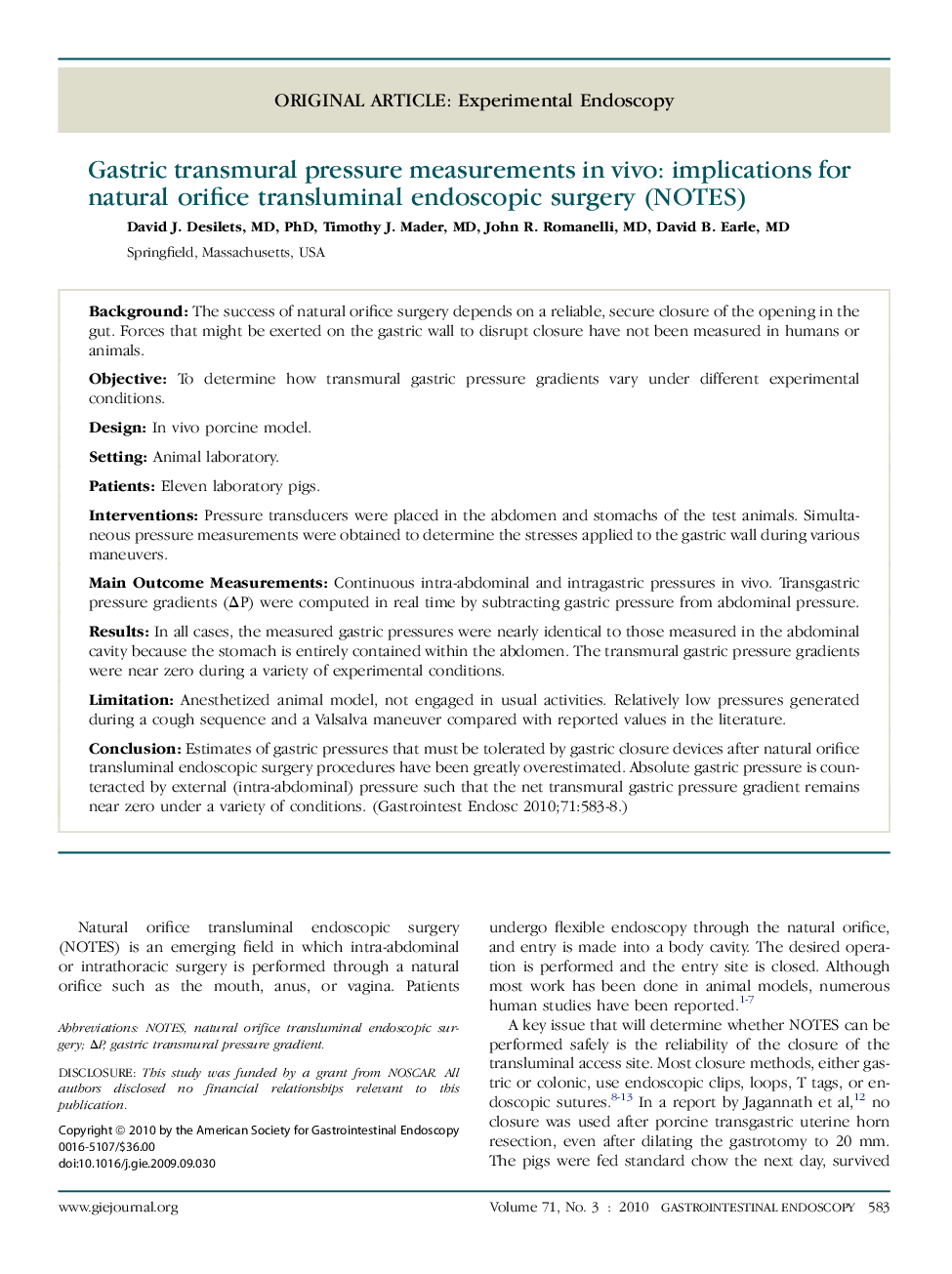| Article ID | Journal | Published Year | Pages | File Type |
|---|---|---|---|---|
| 3307340 | Gastrointestinal Endoscopy | 2010 | 6 Pages |
BackgroundThe success of natural orifice surgery depends on a reliable, secure closure of the opening in the gut. Forces that might be exerted on the gastric wall to disrupt closure have not been measured in humans or animals.ObjectiveTo determine how transmural gastric pressure gradients vary under different experimental conditions.DesignIn vivo porcine model.SettingAnimal laboratory.PatientsEleven laboratory pigs.InterventionsPressure transducers were placed in the abdomen and stomachs of the test animals. Simultaneous pressure measurements were obtained to determine the stresses applied to the gastric wall during various maneuvers.Main Outcome MeasurementsContinuous intra-abdominal and intragastric pressures in vivo. Transgastric pressure gradients (ΔP) were computed in real time by subtracting gastric pressure from abdominal pressure.ResultsIn all cases, the measured gastric pressures were nearly identical to those measured in the abdominal cavity because the stomach is entirely contained within the abdomen. The transmural gastric pressure gradients were near zero during a variety of experimental conditions.LimitationAnesthetized animal model, not engaged in usual activities. Relatively low pressures generated during a cough sequence and a Valsalva maneuver compared with reported values in the literature.ConclusionEstimates of gastric pressures that must be tolerated by gastric closure devices after natural orifice transluminal endoscopic surgery procedures have been greatly overestimated. Absolute gastric pressure is counteracted by external (intra-abdominal) pressure such that the net transmural gastric pressure gradient remains near zero under a variety of conditions.
